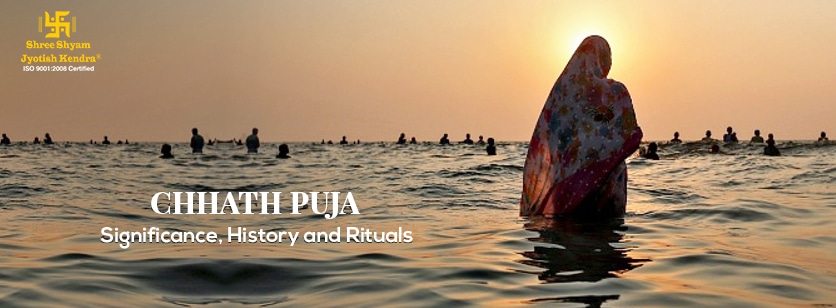
A popular festival of North India, Chhath Puja starts on the sixth day of the Hindu month of Kartik in the Shukla Paksha (waxing moon), and is celebrated for four days. It is a Hindu thanksgiving festival devoted to the Sun, or Surya Deva, and his wife Usha or Chhathi Maiya. Since the Sun is considered to be God of energy and the source of healing in Hinduism, people seek his protection and blessings during the puja. The festival also encourages abstinence from food and water and the worshippers perform several rituals. But what is the story behind celebrating the festival, and why is it celebrated? Let’s have a look into the history, significance, and rituals of Chhath Puja.

What is the History Associated with Chhath Puja?
While the exact origin of Chhath puja is ambiguous, it is believed that it even predates the ancient Vedas texts. There are many references and hymns in Rigveda, Mahabharata, and Ramayana.
As per Ramayana, when Lord Ram returned after the exile, Lord Ram and Sita observed a fast in honour of the Sun God and the ritual evolved as Chhath puja.
On the other hand, as per Mahabharata, Karna was the child of the Sun, and it is said that he used to offer prayers to the Sun God while standing in the water and later distribute food among the needy. From there, the ritual of Chhath puja started.
It is believed that once a family has started performing Chhath puja, it is the duty of them to perform it every year for generations. However, if there is a death in the family, they can skip performing it for that particular year.
What is the Significance of Chhath Puja?
Sun also stands as the symbol of stability & prosperity, and thus, people worship the Sun god for longevity and overall prosperity of the family and loved ones. The festival is celebrated during sunrise and sunset because these are two important periods of the day when a human body can safely get solar energy without any harm.
It is believed that Chhath Puja offers mental calmness and reduces the frequency of anger and negative emotions in a person. People also consider that the rituals lay a great detoxification effect on the mind and the body. This, in turn, helps in maintaining the flow of Prana, the life energy of a person, making the devotees more energetic.
What Rituals are Performed on Chhath Puja?
This festival is considered to be eco-friendly as all the rituals are performed with natural things such as ‘soop,’ which is made from Bamboo. The fervour around the puja includes fasting, taking dips into the holy water of Ganga. Some devotees sleep on the floor and observe fasting without water for 36 hours. Apart from these, there are different rituals for the four days of Chhath puja; these are:

1. Nahay Khay – First Day:
On the first day of Chhath Puja, the devotees do not eat before taking a bath.
2. Lohanda and Kharna – Second Day:
The second day of Chhath Puja concludes with the Kharna Puja and offering food to the gods. Once the fast gets over, the devotees eat a combination of jaggery-laden kheer and puris.
3. Sandhya Arghya – Third Day:
On this day, the devotees observe a rigid fast, where they do not consume water and food. The day is marked with folk songs and devotees taking a dip in the holy waters of holy rivers like the Ganga, Kosi, etc. They also offer Prasad to the setting sun at the riverbank to receive blessings from the Sun God.
4. Usha Arghya – Fourth Day:
This is the last day of the festival celebration, and the devotees have to go to the riverbank early in the morning to make offerings to the rising Sun. After offering the prayers, they break their fast by having Prasad.
With that said, it is important to follow the rituals properly to get the blessings of the Sun god.
 +91 9990176000
+91 9990176000 +91 9999097600
+91 9999097600
 CALENDAR 2024
CALENDAR 2024










